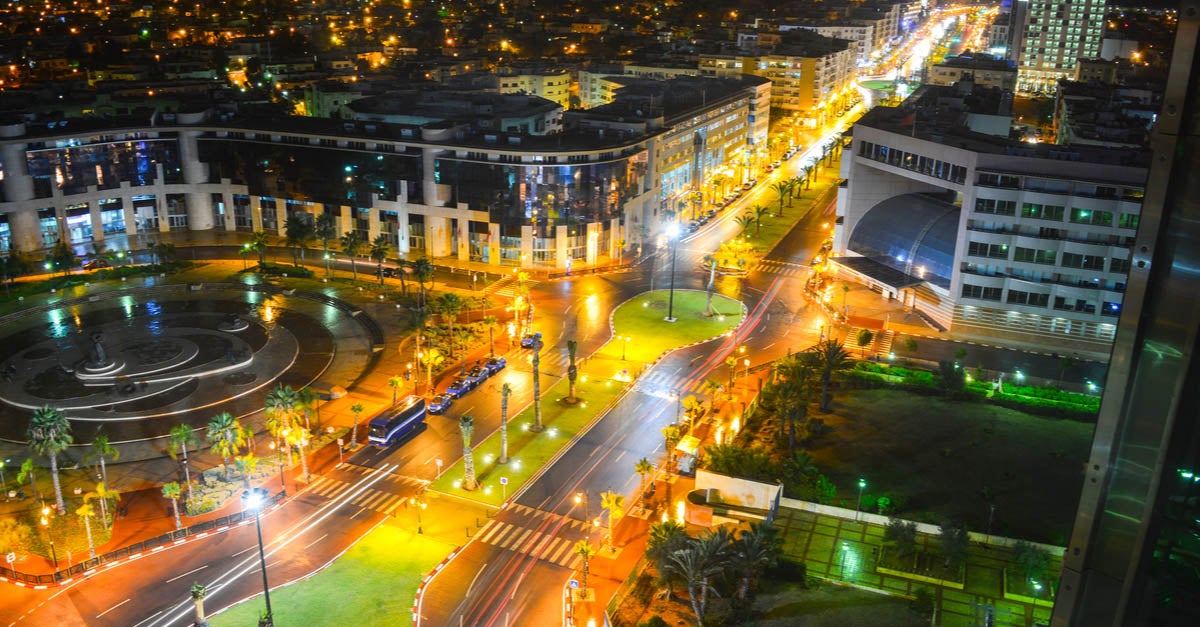 Rabat, Morocco © Souad EL OUAFI/Shutterstock
Rabat, Morocco © Souad EL OUAFI/Shutterstock
Essential to effective policy responses to the pandemic are not just accurate information on the spread of COVID-19 itself, but also real-time data on the associated economic impacts. Such data, however, is not always available from traditional official statistical sources. As such, economists have turned to other sources of data – such as credit card transactions (Chetty et al, 2020), Google Trends search data (Woloszko, 2020) or outdoor air pollution levels (Masaki et al. 2020) – that may be able to proxy changes in economic activity at a high-frequency level. In a new working paper (Roberts, 2021), a further unconventional data source – outdoor artificial lighting at night as detected by satellite ( “lights” for brevity) – is used to track economic activity in Morocco, both nationally and for its subnational regions.
Can changes in night lights really predict changes in economic activity?
Using “raw” night lights data without filtering out background noise reveals no statistically significant relationship between lights and GDP over the period 2012 Q3 - 2020 Q1. The Colorado School of Mines’ Earth Observation Group (EOG) provides monthly composites which record the average intensity of lights over all cloud-free nights in each month. However, while these composites control for the presence of clouds, they remain raw in the sense that they do not clean-out lights from aurora, fires, boats, and other ephemeral lights. And because of this, the author shows that changes in “raw” light intensity for Morocco are unable to predict changes in national quarterly real GDP.
Once cleaning is performed, however, there is a significant relationship that suggests that changes in night light intensity can predict changes in real economic activity at a high temporal frequency. This cleaning is performed using a variety of “masks” which remove the background noise from the data by setting light intensity values to zero for pixels in which the detection of light is likely to be driven by such noise. When this is done, de-trended and seasonally adjusted quarterly movements in light intensity for Morocco show a strong, statistically significant, correlation with quarterly movements in national real GDP (figure 1).
Fig. 1. Relationship between quarterly movements in night lights and currently movements in national real GDP following the removal of background noise
Notes: The graph is based on night lights data which masks out background noise by setting to zero lights values for pixels which are identified as having zero lights in the Colorado School of Mines EOG’s annual lights composites for 2015 and 2016, which are the cleanest lights composites available and which undergo rigorous cleaning to remove all background noise.
COVID-19 and the evolution of night lights
The authors highlight three findings at the national level:
Finding #1: Following a strict lockdown, Morocco witnessed a sharp decline in the intensity of its night lights. Figure 2 shows the sharp increase in the numbers of COVID-19 cases and deaths that occurred in March 2020 following the detection of the first case, while Figure 3 shows the sharp increase in the stringency of Morocco’s non-pharmaceutical interventions (NPIs) that was implemented in reaction.
Note: Derived from Oxford University COVID-19 Government Response Tracker data.
During this time, Morocco witnessed a sharp month-on-month decline in its (seasonally adjusted) night light intensity relative to the pre-crisis trend, of 10.9 percentage points (Figure 4). Just a month earlier, during February 2020, the intensity of Morocco’s lights had been 3.0 percentage points above its pre-COVID-19 trend, by March however, the intensity was 7.9 percentage points below this trend.
Finding #2: Morocco’s night lights showed some signs of recovery in May 2020 as COVID-19 cases and deaths levelled-off. Following the large drop in March, Morocco experienced a further drop in its overall light intensity in April of 3.0 percentage points, relative to the pre-COVID-19 trend. May, however, then saw a partial recovery in the intensity of Morocco’s seasonally adjusted lights as COVID-19 cases and deaths stabilized.
Finding #3: The partial May recovery was short-lived, and, by September 2020, Morocco’s night lights were as dim as they were in March 2020 following the initial COVID-19 shock. Figure 4 shows that, by July, light intensity had fallen back again. This also coincided with an upturn in the growth of COVID-19 cases (Figure 1). By September, Morocco’s seasonally adjusted light intensity remained, relative to the pre-crisis trend, 10.3 percentage points below its level in the final pre-COVID-19 month of February.
Fig. 4. Changes in seasonally-adjusted night light intensity from Feb. 2020, relative to pre-COVID-19 trend
Subnational results
The effects of the COVID-19 shock have been highly persistent across all areas of the country, but some suffered more than others. The hardest hit areas have been the metropolitan regions of Rabat, Tangier, and Fes, with September 2020 night light intensity levels 19.2 – 26.0 percentage points lower than they were in February 2020. Conversely, Souss – Massa and Casablanca – Settat, which were the two areas initially least hard hit, were also the only two to have recovered to light intensity levels, relative to the pre-COVID-19 trend, that were above their pre-crisis levels in February (figure 5).
Notes: Admin-1 area boundaries conform to current regional boundaries. No results reported for June 2020 due to stray light contamination of nighttime lights data.
Areas for future research and words of caution
The analysis can be extended to other geographic units. While the paper analyzes the evolution of night lights, as a proxy measure of economic activity for Morocco and its subnational regions, the methods can equally be applied to more finely defined geographic areas, including cities in Morocco as well as other Middle East and North African (MENA) countries, taking advantage of the region’s low cloud-cover which facilitates frequent high-quality observation of lights.
Finally, a few caveats should be kept in mind when considering the results in both this work and other lights-based analysis of the economic impacts of COVID-19. Most importantly, while lights have become a widely accepted proxy measure of economic activity, they are not a perfect proxy. Ideally, one would like to use lights along with other high frequency, near real-time data to paint a more accurate picture.
Acknowledgements: Mark Roberts would like to thank both the World Bank’s Middle East and North Africa (MENA) urban, disaster risk management, resilience and land team and the Bank’s Country Management Unit for the Maghreb and Malta for their support of the research that underlies this blog. He would also like to thank Hogeun Park and New Light Technologies for their support in the processing of the underlying night lights data.

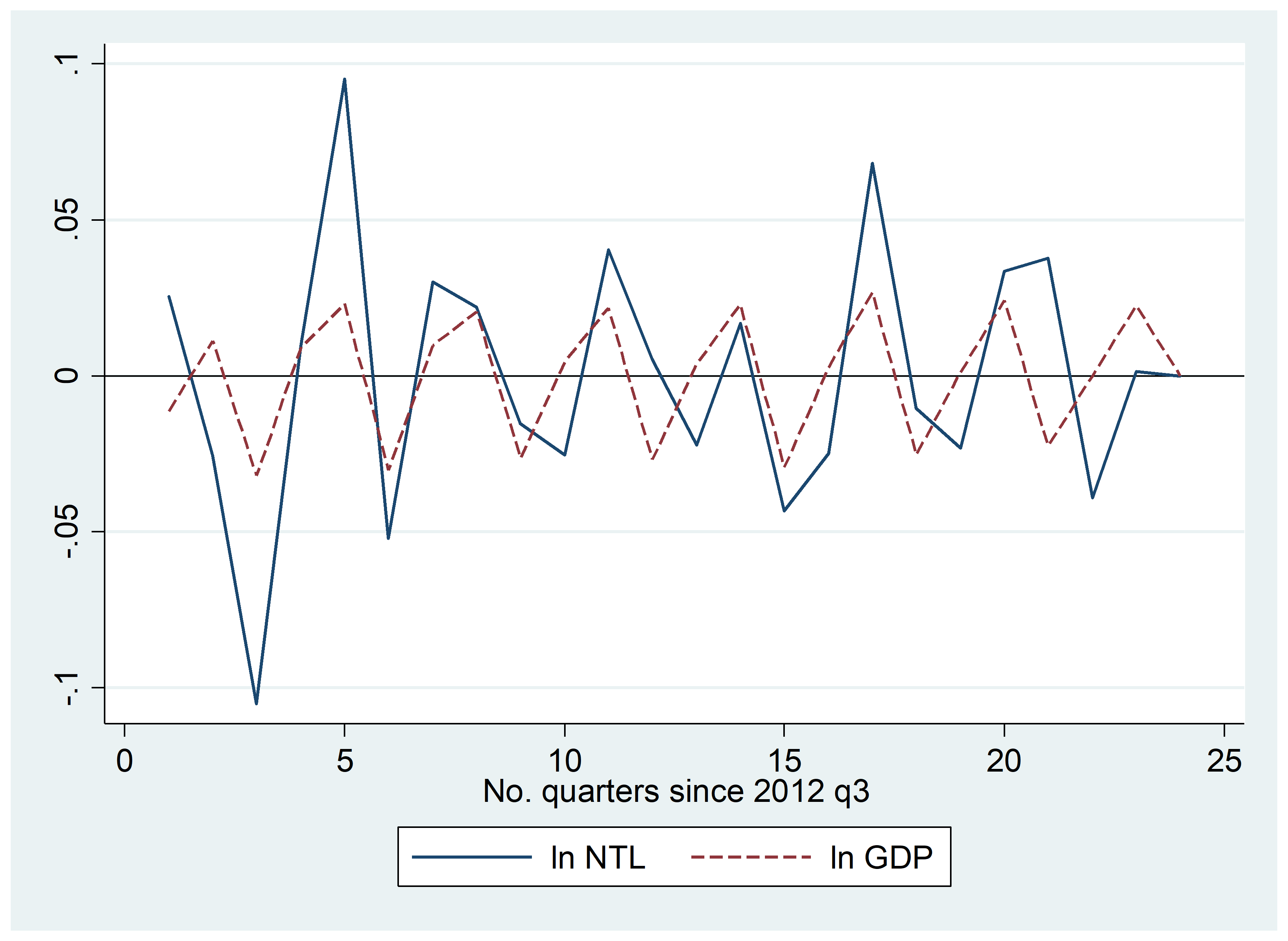

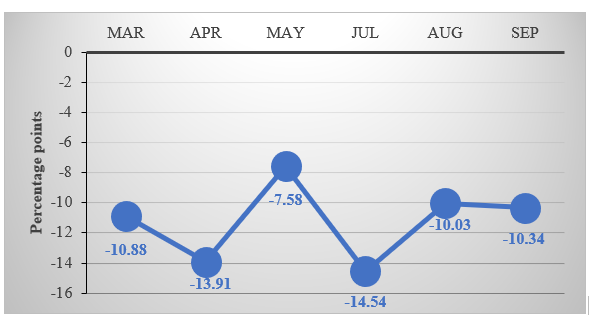
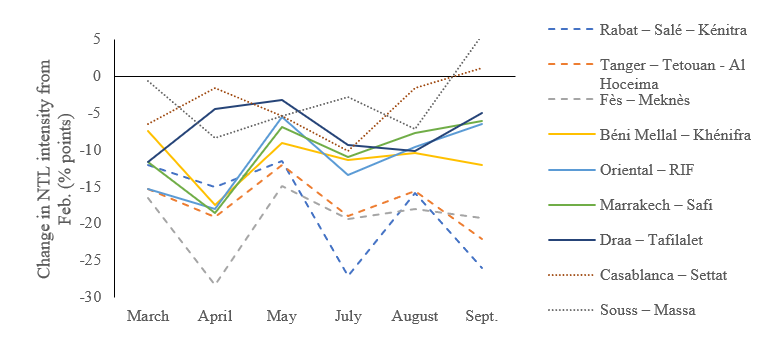
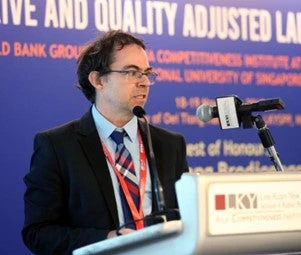

Join the Conversation